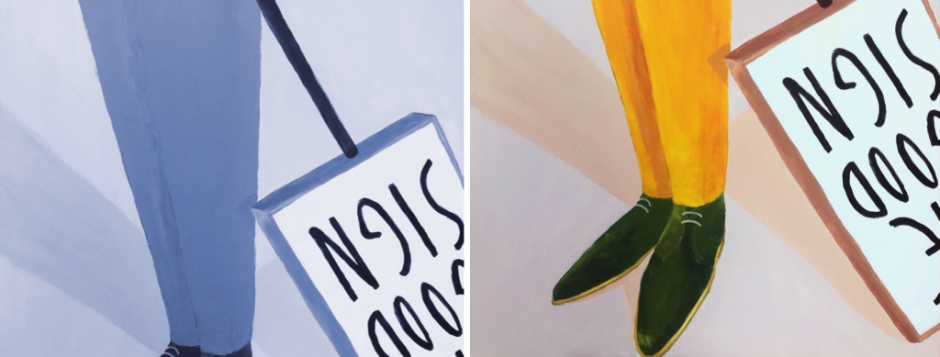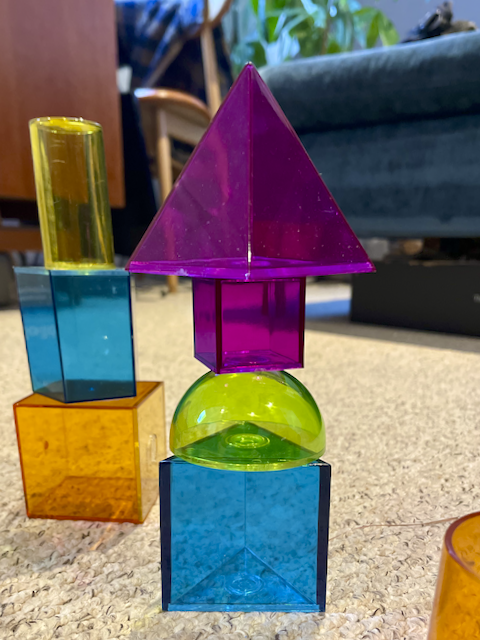Disability & Intersectionality
How does an individual’s disability interact with their other identities? Crenshaw’s theory of Intersectionality provides a suitable prism for analysis as it frames the intersection as a legal and societal blindspot that has to be considered for each individual to understand the many forces impacting them. Illustrated on the examples of Ade and Christine, I discuss how the intersection of their disability with their other identity aspects might have impacted their lives.
Ade Adepitan intersects disability and race. He is a Nigerian-born black male and a famous British TV presenter and author (Wikipedia, 2025). Ade is socially well respected, exemplified in his opinion being frequently thought out on diverse topics (BBC News, 2025; Rotary, 2025, BCU, 2024). Bound to a wheelchair (Rotary, 2025), Ade, frustrated with structural barriers, emphasises “[…], what makes people disabled is not their disability. […] It’s society. Society is what holds us back. It’s that systemic discrimination and oppression.” (ParalympicsGB, 2020). This echoes the Social Model of Disability, which theorises disability as a social phenomenon, differentiating between disability and impairment (Shakespeare, 2010).
Christine Sun Kim is a female American, blind and mute. She is a well-recognised artist living in Berlin. She intersects disability, gender, race and parental care. Her early experiences were shaped by her non-hearing community in Los Angeles which provided a place of belonging and inclusion. However, according to Christine, this meant at the same time exclusion from the hearing world and to pursue her artistic career she had to leave to move to New York and later to Berlin, an experience she found scary at first, but embraced soon after (Art21, 2023).
A recurring theme I notice, is that both represent lived examples of what Ade describes as having found an “opportunity to shine” (ParalympicsGB, 2020, 03:50). Their socioeconomic success makes them rather exceptional too. As Caroline Ellison, Professor of Ageing and Disability at UniSA in South Australia, points out, “there is often an intersectionality between disability and homelessness or disability and poverty” (UniSA, 2023, 26:49). Thus, an evaluation of Ade’s and Christine’s experiences is likely not representative of intersectional disability in general.
Notably, an awareness of their exceptional success, led them both to using their influence for raising awareness. Ade’s scope of influence is international, working with Rotary, he shares in a interview “[…] it was a no-brainer for me to start working with Rotary International to try and spread the word and help, sort of try and eradicate polio.” (Rotary, 2025, 04:18), and as the new Chancellor of Birmingham City University he states: “To be in a position where I can influence is humbling and empowering.”

Christine raises awareness of the needs of the deaf, exemplified in an art project using large-scale captions with poetically unusual, thought-provoking content. She realised that “[…] scale equals visibility and visibility can shape social norms.” She further urges her audience “If you don’t see us we have no place to be.” (Art21, 2023)
“[…] scale equals visibility and visibility can shape social norms.”
Christine Sun Kim (2023)
Talking to other teachers on the product programme, the most frequent impairments are mental health struggles (see fig. 2 disability 6 way FDD) and language barriers. Currently, our student cohort on the MA Innovative Fashion Production (IFP) course is International Asian only (see fig 3. Fee Status IFP) with a large minority of students with low English capabilities. To mitigate the language barriers, I am planning on integrating closed captions in more teaching situations, extending their current use from lectures to seminars. For creating spaces to consider students with mental health struggles and neurodivergence, I am thinking of ways to reduce anxiety, for example by considering noise sensitivity (ParaPride, 2025, 3:46) and re-thinking classroom participation models. I’m concluding with paraphrasing Chay that a place where everyone gets to participate is a better place for all (ParaPride, 2025, 6:57).


References
Art21 (2023) Christine Sun Kim in “Friends & Strangers” – Season 11 | Art21 1 November. Available at: https://www.youtube.com/watch?v=2NpRaEDlLsI&ab_channel=Art21 (Accessed: 1 May 2025)
Birmingham City University (2024) Ade Adepitan MBE | New Chancellor of Birmingham City University25 October https://www.youtube.com/watch?v=dYpysAkaARM&ab_channel=BirminghamCityUniversity (Accessed: 2 May 2025)
ParalympicsGB (2020) Ade Adepitan gives amazing explanation of systemic racism 16 October. Available at: https://www.youtube.com/watch?v=KAsxndpgagU&ab_channel=ParalympicsGB (Accessed: 2 May 2025)
ParaPride (2023) Intersectionality in Focus: Empowering Voices during UK Disability History Month 2023 13 December https://www.youtube.com/watch?v=i7GmJ0uFv_s&ab_channel=Rotary (Accessed: 5 May 2025)
Rotary (2025) World Immunization Week 2025: A Conversation with Ade Adepitan 30 April https://www.youtube.com/watch?v=i7GmJ0uFv_s&ab_channel=Rotary (Accessed: 2 May 2025)
Shakespeare, T. (2010) “The Social Model of Disability.” The Disability Studies Reader. Ed. Lennard J. Davis. New York: Routledge, 2010. 266-73. Print. (Pre-print copy.) Available at: http://thedigitalcommons.org/docs/shakespeare_social-model-of-disability.pdf (Accessed: 1 May 2025)
UniSA Justice & Society (2023) The Social Model of Disability (ft. Caroline Ellison) n.d. September. Available at: https://open.spotify.com/episode/4NSNHlg6PKHGL6h15iDeyD?si=f1fe4e9df4574307 (Accessed: 1 May 2025)
Wikipedia (2025) Ade Adepitan 7 April. Available at: https://en.wikipedia.org/wiki/Ade_Adepitan (Accessed: 2 May 2025)



It is absolutely fascinating to see the way that we have all approached this task slightly differently, which in itself points to our own different perspectives and “lived experiences”. I found it particularly interesting to understand Eva’s point of view relating to the socioeconomic success of both Ade and Christine, and how this has led them to be atypical examples of intersectionality, where more common examples demonstrate intersectionality between disability and homelessness or poverty.
Eva’s style of writing feels more academic than my own, with a wider variety of additional researched resources, which has given me ideas about how I should incorporate more of these into my own blog writing going forward.
NB. Eva, you mention that Christine is blind & mute, did you not mean deaf & mute?
Love your feedback, good to know that I got the point across. I’m aware that I didn’t discuss their struggles in equal measure. Restricted by word count and the additional source I wanted to integrate, I decided for the above aspect. And YES – you are right, of course, I meant deaf & mute!
A thoughtful and nuanced reflection on disability in academic practice Eva. Your exploration of intersectionality, particularly through the experiences of Ade Adepitan and Christine Sun Kim, effectively highlights how overlapping identities can compound marginalisation. I was especially struck by your emphasis on noise sensitivity and sensory experiences in learning environments, an area often overlooked in institutional conversations about accessibility. I share your interest in the sensory dimensions of learning, which I have begun to explore via Titchkosky (2011), who challenges the idea of the “neutral” classroom and urges educators to consider the embodied and sensory aspects of access. I look forward to exchanging ideas on how we might reduce sensory load for students as our practices evolve.
Thank you Kuljeet. Looking forward to it too.
This is a lovely post, thanks Eva! I wonder if the use of visuals and design, colour in general, as well as helpful key terms in bold, are a great way to encourage reading and engagement with your blog, your thoughts and your approach to teaching in general? There is factual reportage, good description, and a lightness of interpretation. This is an interesting technique, to not read “too much” into things (reduce presumption) and take things lightly (respect boundaries). I wonder how these values – if I am correct in perceiving them – may have been learnt or chosen by yourself and through what circumstances…It’s great that you checked-in with colleagues about the main barriers they come across in students. There is another technique called Use of Self, where we consciously choose to share aspects of our own biography, with students, or here, in assignments; for a strategic purpose – that it is helpful, insightful. I do encourage you in further posts to take a moment for sharing personal, autobiographical, reflections, if you feel comfortable with this; as a form of balance with professional. However, even as it stands, you’ve done a great job here! Thanks so much.
Thank you, Tim. There is a lot of food for thought in your comment. You are right on all accounts and the questions you pose, provoke immediate emotions of “yes, ha! *smile* how so?.”
Indeed, based on personal experiences, I seek out, value facts and am cautious not to form premature opinions, as such, I know, what I don’t know.
I will give the personal reflections a go. Your valuable and poignant detective feedback is much appreciated. How come you are so good at reading between lines?
Eva, your teaching experience is so different to mine that it is extremely valuable to have this perspective. I tend to evaluate everything from my perspective and experience and the exercise of thinking “how would I respond to this situation?” by reading other people’s posts has made me reflect tremendously on my own practice. Your cohort being completely international is something I have never faced as a tutor, but I once was an international student too. You acknowledging the different backgrounds is so crucial to making an inclusive learning environment. Things like re-thinking participation models can make the difference between a student disengaging completely or thriving in the course and it is something I can apply to my teaching too. Thank you for your insight!
Thank you for your feedback, Ignacia. Interesting to learn about your perspective and what part of the post has transferable use to you.